Analysis of Aroma Components in Domestic and Imported Lamb Meat Using the Multi-purpose Ion Source “ChemZo”
Purpose
The aroma components present in domestic (Japanese) and imported lamb meat were compared using a time-of-flight mass spectrometer combined with ChemZo (temperature increase mode).
Methods
| Ion source | ChemZo (BioChromato) Polarity: Positive, Negative |
| Mass Spectrometer | compact QTOF (Bruker) |
| Measurement Method | Approximately 25 mg each of lean meat and fat from commercially available lamb were cut and introduced into POT L (large pot). The samples were heated from room temperature to 200°C or 250°C while monitoring with the mass spectrometer. |
| Data Processing | Differential analysis (IDS) and database search (DBS) were performed using Spectra Scope. |
Results 1
Fig. 1 shows the TIC (Positive) of both domestic and imported lamb meat, including lean meat and fat. Fig. 2 shows the EIC of aroma components identified through IDS and DBS. The component detected from the lean meat of imported lamb was estimated to be 2E-2-Decenal (C10H18O). Additionally, the component detected from the fat was estimated to be 2E-2-Nonenal (C9H16O). Fig. 3 displays the mass spectra of lean meat from 200°C to 250°C.
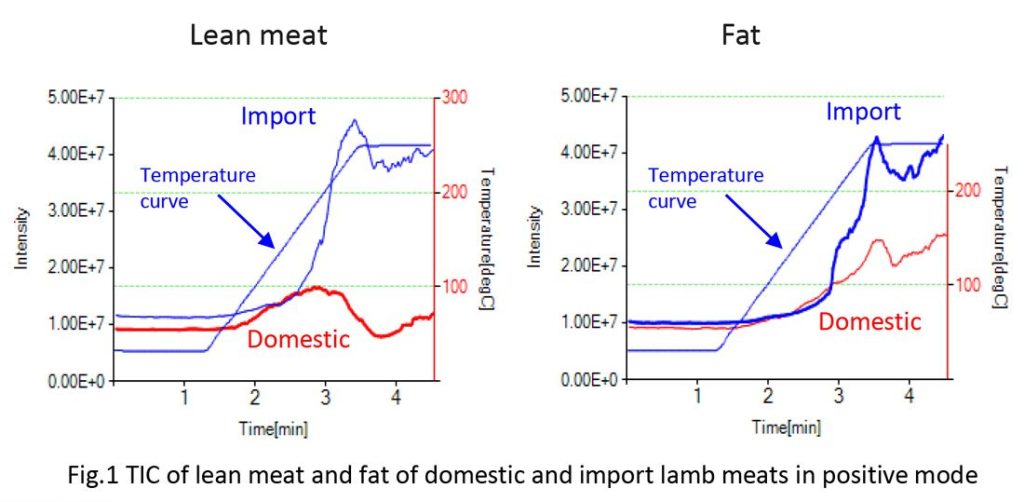
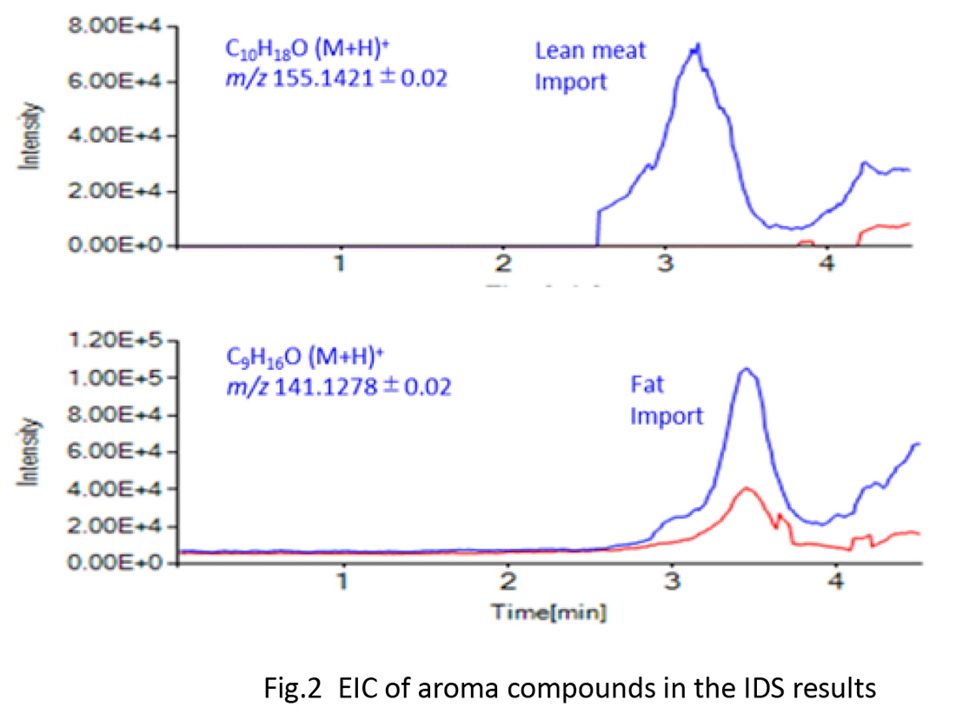
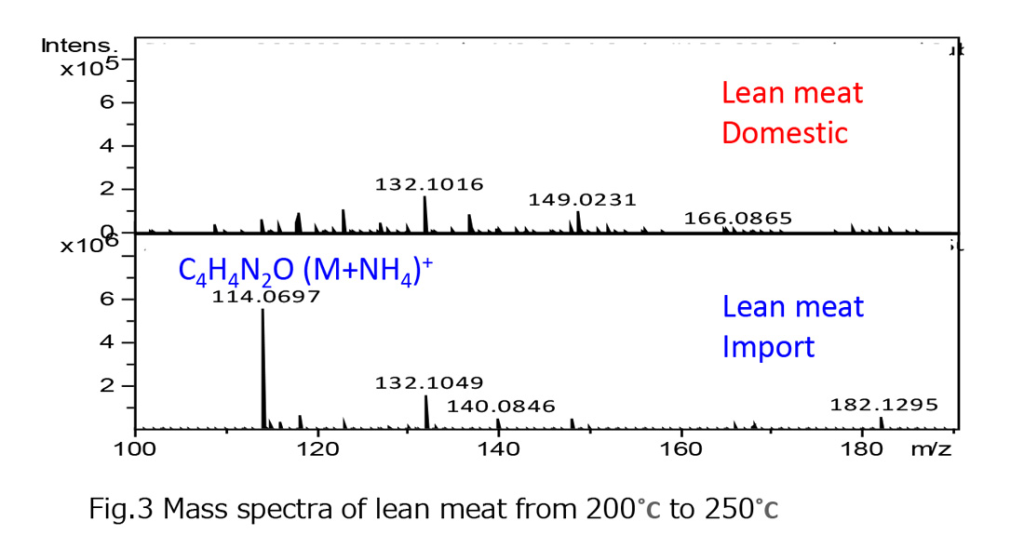
Results 2
Fig. 4 shows the TIC (Negative) for both lean meat and fat of domestic lamb. Fig. 5 presents the EIC of C10H20O2 identified through IDS and DBS analysis. C10H20O2 was estimated to be 4-Ethyloctanoic acid and 4-Methylnonanoic acid, which are characteristic aroma components of lamb and mutton.
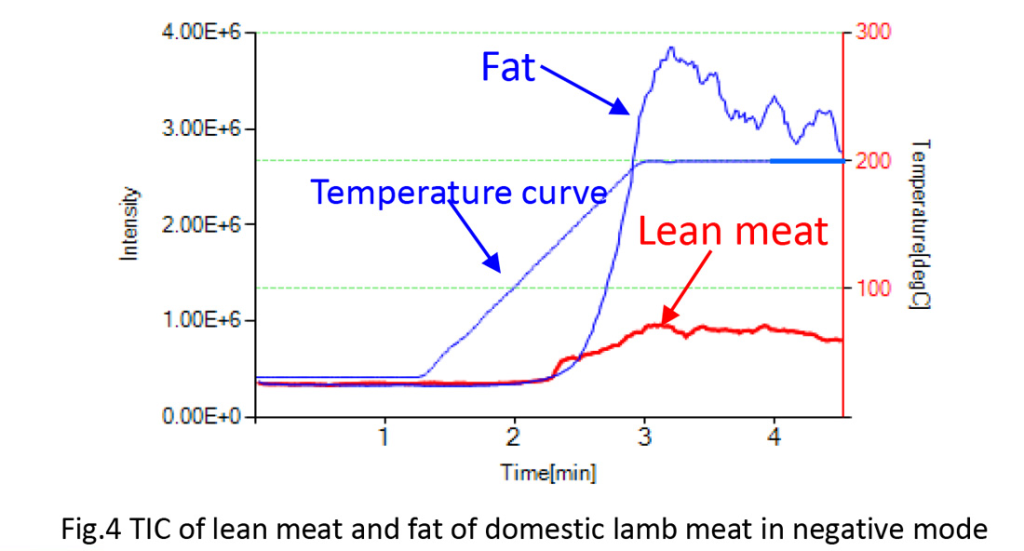
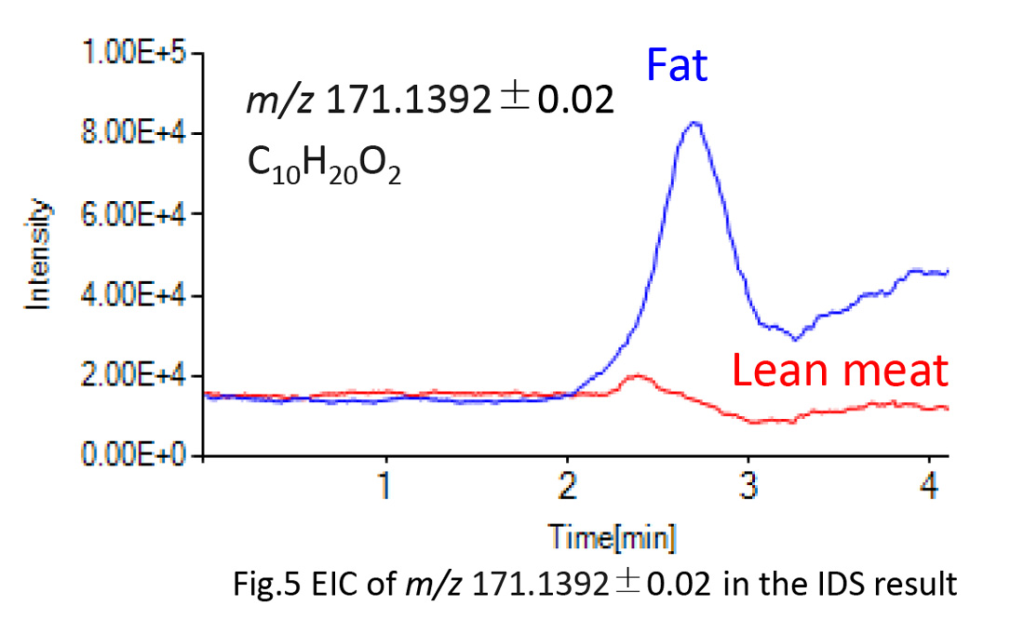
Fig. 6 shows the mass spectra from 100°C to 200°C. It was confirmed that C10H20O2 was present in higher amounts in the fat compared to the lean meat.
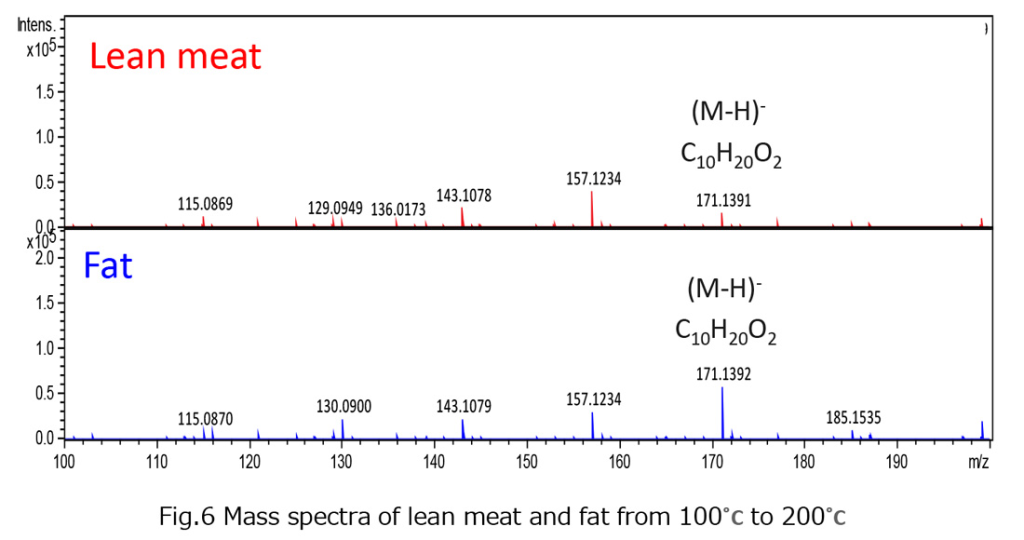
ChemZo Product Page / Applications
